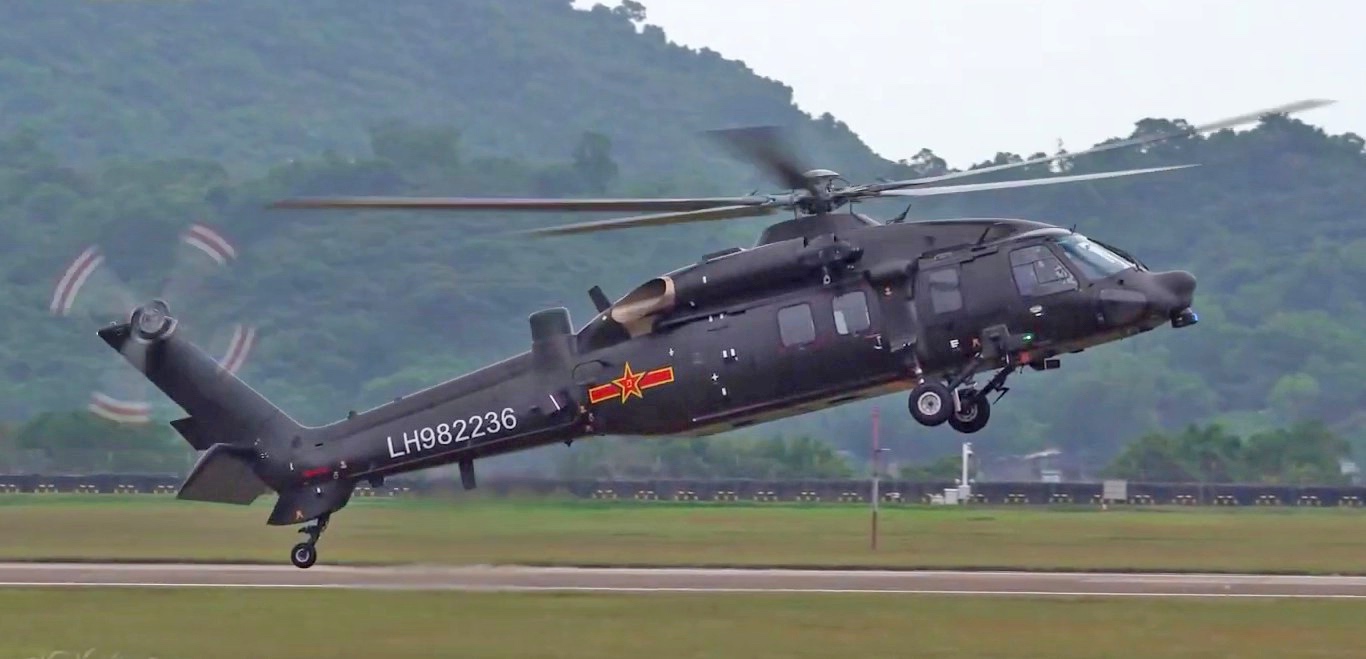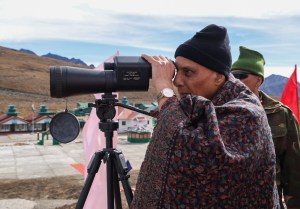Though China and India have managed to establish a tenuous calm at the Line of Actual Control (LAC), Beijing continues strengthening its military presence and fortifying its infrastructure in the vicinity of the disputed regions to respond quickly in the event of a future border crisis.
Renowned OSINT analyst Damien Symon, who goes by the username @detresfa_ on Platform X, published the latest satellite imagery showcasing China’s ongoing construction of a heliport near Arunachal Pradesh. The new heliport is coming up at Zayü county in the Nyingchi Prefecture in the southeastern part of the Tibet Autonomous Region (TAR).
Symon wrote on X that the construction of the heliport was taking place near the Indian state of Arunachal Pradesh’s ‘Fishtails’ sector. Fish Tail-I and II are in the easternmost corner of Arunachal Pradesh. While Fish Tail-I is largely glaciated with sparse patrolling, Indian and Chinese troops had previously launched patrolling in the Fish Tail-II region in coordination with one another.
Once constructed, the Chinese heliport would be located just 20 kilometers from the Indian border—yet another reminder that despite a thaw in ties, China has simultaneously launched a massive ramp-up of its border infrastructure.
The new facility will strengthen China’s border patrols and its capability to quickly deploy troops to forward locations.
Although major hostilities between India and China broke out in Eastern Ladakh in 2020, the Arunachal and Sikkim regions located near the eastern sector along the LAC have not been immune to acts of micro-aggression by the Chinese People’s Liberation Army (PLA). Satellite imagery and OSINT reports over the last couple of years suggest that China has been consolidating its military position in the region.
China is constructing a new heliport near Arunachal Pradesh's ‘Fishtails’ sector, merely 20 kilometers from the Indian border, this facility will likely enhance China’s ability to swiftly mobilize troops to forward positions & would improve its border patrols pic.twitter.com/xpSSQGLkS4
— Damien Symon (@detresfa_) September 16, 2024
Last year, reports in Indian media indicated that the PLA was constructing a helipad opposite the Kameng area of Arunachal Pradesh as part of infrastructure expansion along the LAC. It was also alleged to be constructing military facilities with massive storage depots and strengthening its combat posture with surface-to-air missiles, jammers, and radars in Tibet.
Moreover, the PLA has a special affinity for building heliports along the border. Beijing has reportedly constructed about ten helipads close to critical locations along the LAC. While most of these are located near the Eastern Ladakh region, it is hardly a surprise that a similar pattern is being replicated near Arunachal Pradesh.
The construction of the heliport just 20 kilometers from the border clearly demonstrates the focus on improving rapid deployment and logistical support.
In the event of a border contingency, Chinese helicopters can swiftly airlift troops and equipment along the frontlines. Along with the heliports and other military facilities, China has also invested considerably in road connectivity, which would allow unbridled movement of its troops from its military facilities to the border.
The rampant construction of infrastructure demonstrates China’s technological prowess and faith in its platforms, which allow for improved air communication in the far-flung regions of the Tibetan plateau, facilitating timely troop movements, logistics, and disaster relief efforts. From Rutog County in the west to Nyingchi City in the east, numerous heliports in Tibet are now used by PLA Army Aviation units.

Incidentally, the latest satellite imagery comes at a time when India and China are holding military talks to disengage from hotspots in the Ladakh sector, which was witness to a violent stand-off between Indian and PLA troops in 2020.
The Chinese Foreign Ministry claimed last week that the situation along the two nations’ shared border was largely stable and under control and that troops had disengaged in four locations in eastern Ladakh, including the Galwan Valley.
Breaking: Chinese foreign ministry says Front-line armies of India, China have "realized disengagement in four areas" in the Western sector of the China-India border, including the Galwan Valley.
Transcript from Chinese foreign ministry press conference https://t.co/lRoYlC9Z7c pic.twitter.com/wCl8cEsuox
— Sidhant Sibal (@sidhant) September 13, 2024
“In recent years, front-line armies of the two countries have realized disengagement in four areas in the Western sector of the China-India border, including the Galwan Valley. The China-India border situation is generally stable and under control,” said Mao Ning, a spokesperson for the Chinese Foreign Ministry.
The Indian Ministry of External Affairs had previously declared that certain crucial positions remained even though most situations involving disengagement had been mutually agreed upon. Security analysts have observed that, as part of a sinister plan for the LAC, China has been unusually slow to remove troops from key locations.
Moreover, despite withdrawing from some places that it had occupied in 2020, China has continued to amass military and build support infrastructure along the entirety of the LAC, including both the western and eastern sectors.
The Tussle Over Arunachal Pradesh
China claims the Indian state of Arunachal Pradesh as South Tibet, frequently referring to it as ‘Zagnan’. Earlier this year, a Chinese Foreign Ministry spokesperson reiterated that ‘Zagnan’ was a part of China before it was illegally occupied by India—a claim that is refuted by the Indian government as “ludicrous”.
The two states locked horns in March this year, with China taking strong exception to Indian Prime Minister Narendra Modi’s visit to Arunachal Pradesh and lodging a diplomatic protest with India.
“The area of Zangnan is Chinese territory. The Chinese government has never recognized the so-called ‘Arunachal Pradesh’ illegally set up by India and firmly opposes it,” Wang Wenbin, spokesman for China’s Foreign Ministry told reporters.
In a stern riposte, Randhir Jaiswal, spokesman for the Indian Foreign Ministry said, “The State of Arunachal Pradesh was, is, and will always be an integral and inalienable part of India.”
A scuffle broke out between Indian and PLA troops in the Tawang sector of Arunachal Pradesh in December 2022, suggesting that all was not completely well in the region.
Indian Defense Minister Rajnath Singh later told the Parliament that “PLA troops tried to transgress the LAC in the Yangtse area of Tawang Sector and unilaterally change the status quo”.

The Defense Minister added: “The ensuing face-off led to a physical scuffle in which the Indian Army bravely prevented the PLA from transgressing into our territory and compelled them to return to their posts. The scuffle led to injuries to a few personnel on both sides.”
Some reports in Indian media indicated that China also deployed military aircraft at its Shigatse Airport in the wake of the Tawang clashes.
Additionally, in late 2022, Planet Labs released a set of satellite photos of the Shigatse base showing that the WZ-7 Soaring Dragon UAV was spotted at Shigatse two days after Indian and People’s Liberation Army (PLA) troops clashed at Arunachal Pradesh’s Tawang.
China has been ratcheting up the dispute over India’s northeastern province of Arunachal Pradesh and constructing and expanding hundreds of villages known as “xiaokang” along its contentious border with India. These villages have “military and dual-use infrastructure”, and many are clustered along the eastern sector that borders Arunachal Pradesh.
- Contact the author at sakshi.tiwari9555(at)gmail.com
- Follow EurAsian Times on Google News




